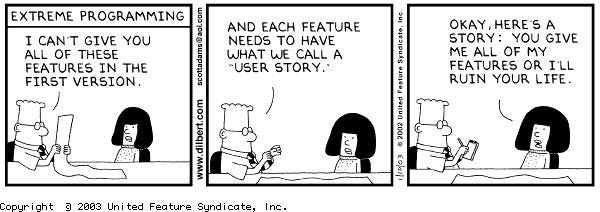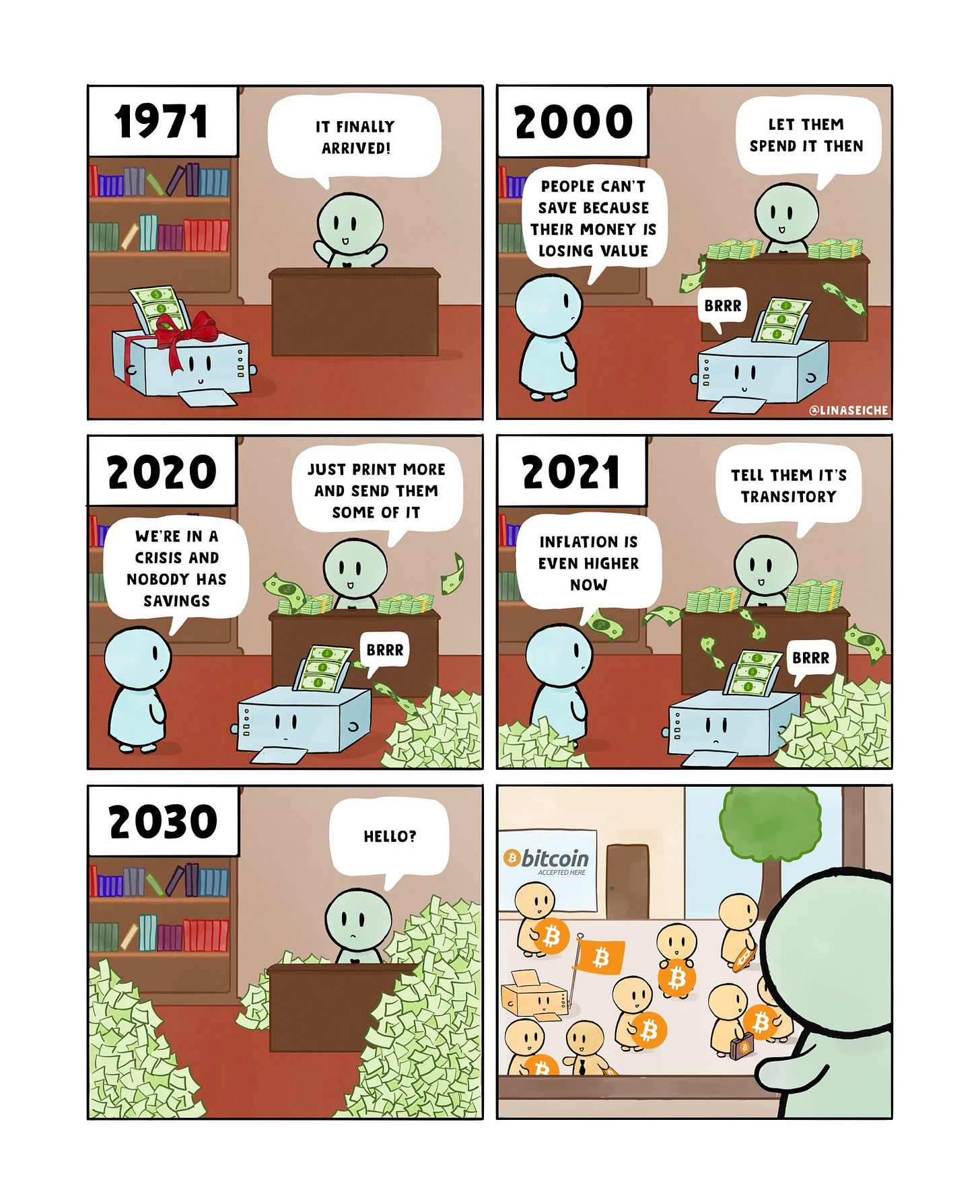Saifedean Ammous just published a followup to his popular book on Bitcoin: The Fiat Standard. Having read the book, this is my attempt at giving you an overview so you can decide for yourself whether it’s worth picking up. The book is split into three major parts: Fiat Money, Fiat Life and Fiat Liquidator.
The first part of the book is about the current system, Fiat Money. It goes through why we have the financial system that we have today. Saifedean continues in the tradition of Austrian economists by interpreting historical events in light of economic forces and motivations, starting with the advent of Central Banking, the Bank of England. He explains how the Bank of England used its lending power to take value from the people who used its currency, particularly in the colonies. He’s surprisingly sympathetic to why Central Banks centralized gold which eventually led to fiat money. As he explains, gold’s salability across space is made much easier through the use of debt instruments. I learned a lot about how controlling the monetary network became such a desirable prize for sovereigns and the struggle that ensued.
This section also goes through the boom and bust cycles of credit expansion and contraction and puts them in historical context. Saifedean then shows how the real levers of international power involve monetary dominance. This was a big light-bulb moment for me, as it showed clearly why countries try so hard to get their own currencies adopted by other countries. International politics makes so much more sense when thinking about economic control through the forcible spread of a fiat monetary network.
A very useful distinction that I didn’t fully understand until reading this section is the difference between money and credit. As Saifedean points out, the conflation of the two is precisely what makes fiat money work. Credit is a promise in the future that needs collection. Money is what exists now and can be traded. The credit and money conflation is what causes opportunity-cost-free-debt to become such a major part of economic life. Essentially, everyone that has credit available to them is incentivized to go into debt.
This leads into the second part of the book, Fiat Life, which is about the second and third-order effects of fiat money, particularly around time preference. I’m sure critics will complain about his analysis of food, science and energy, but he makes compelling arguments that these have been and continue to be corrupted by fiat money. As he shows, these industries are not free markets and the economic distortions ultimately serve their fiat funders, not the markets themselves. You may not like his conclusions, but his reasoning is solid and will give you a lot of food for thought.
The chapter on Fiat States was especially enlightening for me. Saifedean explains here what International Financial Institutions do. These are organizations like the World Bank, IMF and WTO which Saifedean calls the Misery Industry. As he shows, “international development” is a way to enforce monetary dominance on third-world countries. Saifedean shows how these International Financial Institutions hold back the development of underdeveloped countries, largely through monetary means to fund the bureaucratic class.
The final part of the book is about Bitcoin and how it will fix many of these distorted markets. The section is remarkably positive because of the hope that it offers. For example, Saifedean does not expect hyperinflation to be the endgame for the major fiat currencies as Bitcoin takes over. He expects the distorted markets to slowly correct as a result of removing fiat influence.
This section also lays out sharp reasoning about proof-of-work. Saifedean argues that proof-of-work is an alternative to political and monetary dominance games which involve expensive wars and violence. He also writes about the possibility of government attack and why Bitcoin will be able to resist it. As Saifedean explains, we have been conditioned to think that government bans are effective, when historically they haven’t been. I really enjoyed the clarity of his economic arguments, as they put in words what I had thought before, with better economic precedents and analogies.
Perhaps my only complaint about the book is that it reads a bit like a collected group of blog posts. I found many sentences that sounded almost exactly like what I had read a few chapters earlier. This is perhaps to allow the reader to digest a chapter at a time. That’s not necessarily a bad thing as the book is definitely worth examining multiple times.
Overall, I highly recommend this book as it helps readers understand how the current monetary system works. The strategy of comparing fiat money’s operation with Bitcoin’s hugely enlightens those readers who already know how Bitcoin works and the historical examples are top notch.
Bitcoin
Ledger finally has support for PSBT! As part of the upgrade, they’ve also added Taproot support. The post is great for learning how they made engineering tradeoffs given the very constrained environment that Ledgers operate in. For example, the RAM on their device is less than 10k, so reading an entire PSBT file into RAM is not an option. The wallet still remains stateless, so clients have to store descriptors and provide them to the wallet by registering them. Overall, the post should give developers a good idea of their architecture and strategy.
Speaking of which, here is a handy chart of which wallets support sending to bech32m addresses, which are Taproot. As before with Segwit, progress is incremental. A majority of wallets seem to be able to send to bech32m addresses, but few are ready to receive to bech32m or p2tr addresses. As I argued in last week’s newsletter, the benefits to users, in terms of realistic security threats are enormous and I expect developers to implement them in the coming year.
Richard Myers shows how SIGHASH_ANYPREVOUT (APO) can be used to create covenants. The main idea from the slide deck is that you can put a signature in the tap leaf script, making it valid for any previous output in a TapRoot MAST tree. More signatures from that private key wouldn’t be available because it was generated using MuSig2 or some other process which requires coordination between multiple parties. As a result, only the outputs that the signature signed for would be available. This is a clever way to do covenants with this single additional SIGHASH, though I’m not sure how it would fare against the many other proposals.
Lightning
Kevin Rooke predicts that creators getting paid will be the next big use case for LN. This is a big problem as the centralized platforms like Facebook, YouTube and such are not only taking a large portion of the money that would be paid to the creators, but also often censoring them for their political opinions. As Kevin correctly points out, this is an obvious fit since content creators are often really good at marketing and don’t necessarily need these platforms to succeed.
Bastien Tieturier writes about how you can maximize privacy on Lightning. The post goes through channel opening, LN payments and path finding and shows at what steps different information is leaked. The post is an excellent compilation of the possible ways in which your information can leak. I hope LN software can help users understand what may or may not be leaking as they work on their clients.
Nick Farrow argues for using Lightning as a non-KYC way to get Bitcoin. As he points out, so many of the possible ways in which you receive Bitcoin require KYC. These are largely custodial providers, which will take the BTC on your behalf and convert them for you to your local currency. Taking Lightning using your own node allows you to receive non-KYC coins, which can be a boon for privacy.
LN-SMS is a service to get around the ridiculous phone number verification rules. You can pay to receive a one-time SMS message using Lightning.
Economics, Engineering, Etc.
Yanmaani has a complete analysis of proof-of-stake and how it cannot be a consensus mechanism. The post goes through the problem of decentralized consensus and how proof-of-work elegantly solves this problem by having an objectively costly metric, that of finding a proof-of-work hash. Proof-of-stake does not have an objectively costly metric and consensus disputes cannot be solved without some authority. In other words, proof-of-stake is a centralized system. Amazing article that needs to be read by everyone who thinks they’re being smart by talking about PoS.
Marty Bent draws attention to some miners who had their pools attacked via DNS pollution. This is not a normal attack, but it does make sense that something as centralized as DNS could be a possible failure point. To really make these pools more robust, they may have to move toward TOR hidden services and the like to get that extra level of robustness.
Robert Breedlove shows how inflation is despair in his Bitcoin is Hope series. As he points out, inflation has the opposite effect of hope in that it destroys rather than creates. Breedlove argues that this regresses civilization. The framing is correct and is pitch perfect for the times we live in. More people than ever are feeling this malaise and I suspect this will result in some huge political consequences in the next few years.
Paul J. Miller has a thought-provoking article on premature innovation. The post goes all over the place, including rants about unseen effects, El Salvador’s legal tender laws and fragility, but there’s a lot of substance there. Essentially, he thinks there are premature innovations that are fooling a lot of people into thinking that there’s something amazing around the corner. It’s a sobering reminder that El Salvador may not be the model that everyone copies and that some other method may need to come into play.
Tomer Strolight has a follow up to his very popular post on the problem of Ethereum. In this followup, he again distinguishes the different classes of people on Ethereum and concludes that the London hard fork essentially screwed both the worker class (miners) and the user class so that the wealthy class could benefit. Instead of users paying miners with fees as before, now those fees are just getting burned. As he points out, ETH is just as, if not more unfair than normal fiat money.
LVL is planning to make it possible to bank on Bitcoin. Full disclosure, I’m an advisor to the company, but I’ve been pushing for them to go in this direction for a while now. They are aiming to make it possible for you to live on the Bitcoin standard while taking care of your yucky interface to fiat money. If there are as many people that want to live this way as I think, this should be a major hit.
Quick Hits
Bitcoin Developer Anthony Ronning explains why he left Twitter.
Ethereum’s blockchain is still smaller than Bitcoin’s. It’s just so horribly designed that running it requires far more resources.
Don’t use your fingerprint as a security measure.
Another week, another ETH smart contract suffers from idiocy.
Events
I am planning to be in London for Advancing Bitcoin March 3-4, but there is some possibility I won’t be able to get into the UK. I am also going to be at Bitcoin 2022 in Miami April 6-8.
I’ll also be doing the Programming Blockchain seminars in London March 1-2 (subject to being able to get into the UK) and Miami April 4-5.
Podcasts, Etc.
On this week’s Bitcoin Fixes This, I talked to Fred Thiel, CEO of Marathon Digital Holdings. We talked about his path to becoming CEO, how he tries always to add value and how he prevents his companies from becoming ossified.
I read through last week’s newsletter which you can find here.
I was on Bitcoin Basics Podcast to talk about Taproot. Here is the new book:
Unchained Capital is a sponsor of this newsletter. I am an advisor and proud to be a part of a company that’s enhancing security for Bitcoin holders. If you need multisig, collaborative custody or bitcoin native financial services, learn more here.
Fiat delenda est.













Ethereum feels awfully like a Mechanical Turk. Overcomplicated rubiks cube trying to solve an imagined problem. Time will tell.
the agile interview was fun. always appreciate learning how folks come into their own.